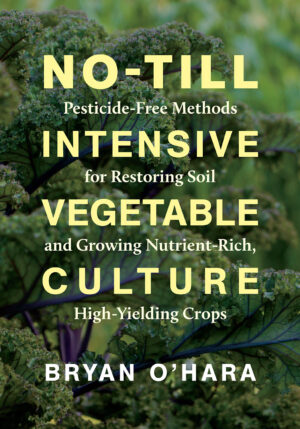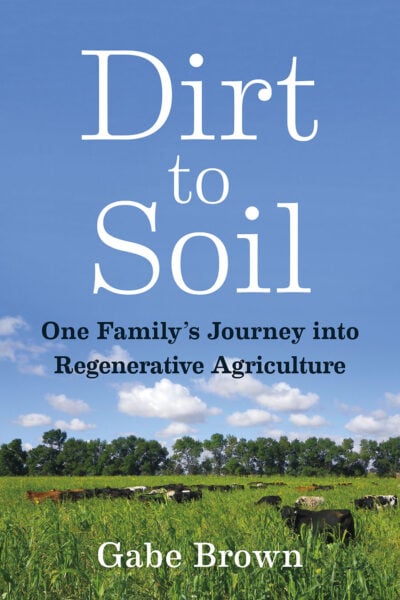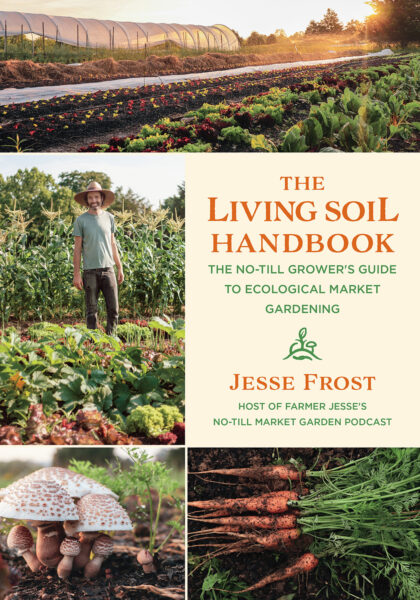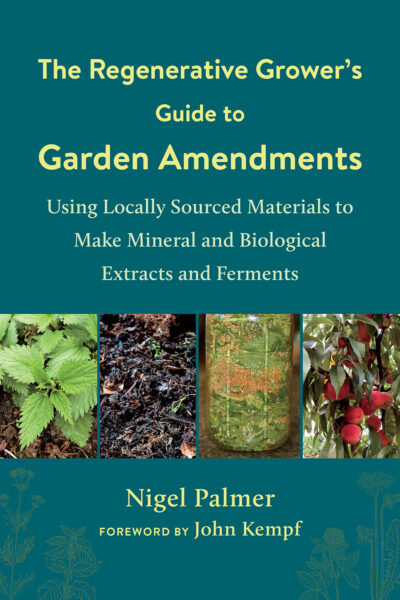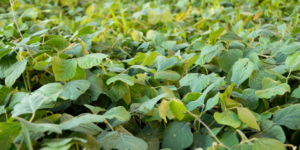A Guide to Soil Fertility and Crop Health
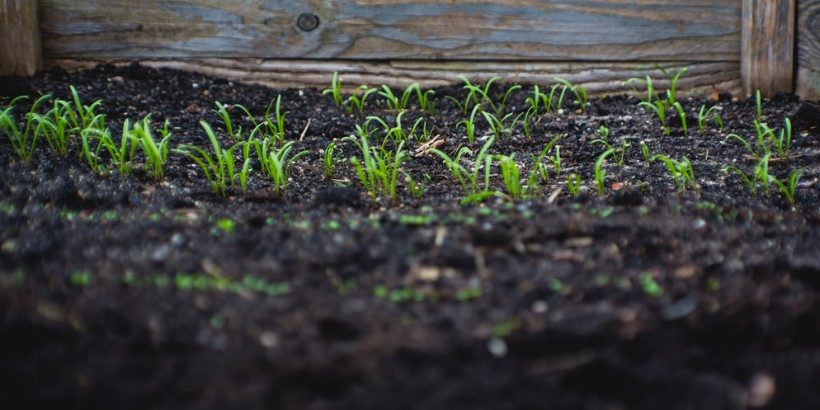
Want to see your crops thrive this upcoming growing season? The key is in soil fertility and health. Spend time maintaining your soil’s health to guarantee bigger and better crops come harvest time!
The following is an excerpt from No-Till Intensive Vegetable Culture by Bryan O’Hara. It has been adapted for the web.
What Is Soil Fertility?
Soil fertility refers to the overall ability of a soil to produce abundant healthful crops. As growers it is one of our primary duties to manage the soil to bring it into an increasing state of fertility.
Factors that work against this effort include pollution, disturbed weather conditions, insufficient understanding of agricultural practices, and the lack of farm profitability, which can lead to an inability to invest in soil-enhancing methods and materials.
Yet there is also much in our favor because the earth actively seeks to improve the soil’s fertility. The aware grower can assist this flourishing of life to an astonishing extent.
The degree of a soil’s fertility is related to the function of the biological, chemical, physical, and energetic states of the soil, which growers can observe and, to some degree, measure.
The observation and testing of soils and plants gives the indications for appropriate materials that can be applied by the grower in order to assist soil fertility.
Organic Matter and Soil Fertility
The level of organic material in the soil has a dramatic impact on soil fertility, as well as the grower’s soil practices.
The consistent physical examination of soil for signs of organic matter accumulation gives the grower the ability to observe how management practices are impacting soil life.
As soil organic matter levels increase, many benefits will potentially result if the grower understands how to respond.
Increased organic matter content usually signals an increase in soil life, which in turn will result in faster decomposition of materials and greater nutrient release from both the organic and the mineral portions of the soil.
In addition, there will be greater fixation of atmospheric nitrogen into molecular forms embedded in the soil life.
Feeding Your Soil
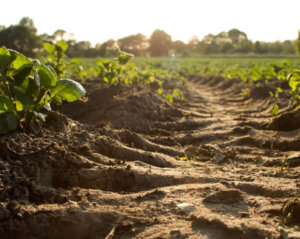 This soil life thrives on large volumes of food in the form of plant residues, mulches, composts, and plant root exudates, and it’s a primary duty of a grower to be an ample provider!
This soil life thrives on large volumes of food in the form of plant residues, mulches, composts, and plant root exudates, and it’s a primary duty of a grower to be an ample provider!
This food for the soil life is often the heaviest and most voluminous fertilizer material growers apply to their fields.
It is best to keep the soil life evenly fed in order to achieve steady nutrient release and growth of crops.
To ensure this steady nutrient release, attention to the efficiency and rate of surface residue decomposition is essential. Abundant diverse materials in an active state of decomposition are a beneficial condition.
The increase of organic matter also dramatically impacts the soil porosity, with all the impacts of this condition on soil, air, water levels, and soil life diversity.
Again this can be of great benefit to a grower, but very high porosity may require different management techniques.
Often it is said an organic matter content of 5 percent or more is beneficial to vegetable production; many vegetable fields and gardens may have significantly higher levels.
Crop and Soil Assessment Tools
In addition to careful observation, there are tools that provide quantifiable assessment of growing conditions. By giving measurable results, they help train growers in the finer details of soil and crop health observation.
Growers can purchase devices such as penetrometers, Brix meters, pH meters, and electrical conductivity meters to perform in-field assessment of conditions.
This is an inexpensive way for growers to obtain immediate information on a wide variety of growing areas and crops. A more thorough assessment can be achieved through laboratory analysis of soil and crop tissues.
The combination of in-field testing, laboratory analysis, and particularly careful physical examination of growing conditions provides interrelating guidance for grower actions regarding soil fertility efforts.
In-Field Crop and Soil Assessment Tools
A penetrometer is used to assess soil compaction. It is essentially a steel rod attached to a pressure meter. This tool allows a grower to quickly assess the compaction of a soil at various depths.
The pressure required varies as the rod is pushed through the soil layers. These pressure changes indicate potential compaction pans.
The information gained is not as complete as an assessment carried out by digging through the soil to directly observe the relative compaction of the layers, but it is certainly much quicker to push down a rod than to dig a hole.
A homemade version is a steel rod with a bent handle at one end, essentially forming an L-shape. With this tool growers use their own senses to determine when the pressure needed to push the rod through the soil layers signals a compaction issue.
Testing Soil pH

On-farm plant and soil assessment tools include a refractometer and adjusted vise grip for extracting and assessing plant sap, three types of electrical conductivity and pH meters for both soil and sap analysis, and a penetrometer for testing soil compaction.
It is relatively easy to test soil pH using an inexpensive pH meter with a direct-reading soil probe.
Another simple method is to mix distilled water with a soil sample and use pH test strips to check the pH. There are also meters that measure the pH of liquids.
These meters are capable of reading the pH of not only soil / distilled water mixtures but also extracted plant saps. A purchased modified vise grip plier is a helpful tool to extract plant saps for testing.
What Do Meters Measure?
Meters are also available that measure electrical conductivity (EC) of soil, which provides an indication of the volume of simple ions that may be available for uptake by plants.
This not only gives an idea of the potential need for fertilization, but is also helpful in determining whether the volume of fertilization materials applied was insufficient, appropriate, or excessive.
Like pH meters, EC meters are available with a direct-reading soil probe, or there is a model that gives a measurement of liquids. The liquid-measuring meter requires mixing soil with distilled water and is also capable of measuring plant saps.
Assessing Soil Fertility
In terms of using plant data to assess soil fertility, measurements of Brix levels, plant sap pH, and plant sap EC can be revealing.
Brix is a measurement of dissolved solids in plant sap, and it can be a helpful indicator of plant vitality. All these meters can be used right in the field to take measurements. Many variables affect Brix readings, but in general the higher the reading the sweeter the flavor of the vegetable.
Higher readings usually correlate with many improved plant qualities as well.
Along with in-field observation and soil testing, the Brix, EC, and pH of plant sap can provide further information about fertilizer excesses and deficiencies as well as guidance toward which kinds of fertilizer may be of most assistance.
As with most testing procedures, the more plant sap testing is done over time and in various conditions, the better. Frequent data collection allows growers to identify trends, which are more meaningful than an individual numerical reading.
For instance, a grower can test the EC and pH of plant sap and soil as well as the Brix of the sap, then add fertilizer material to the soil and, after allowing an appropriate time for fertilizer integration, retest.
The changes in these parameters may yield insights into the effectiveness of that fertilizer material, and when such tests are repeated under varying conditions with similar results, growers can adjust fertilization efforts accordingly.
Recommended Reads
Recent Articles
Want to see your crops thrive this upcoming growing season? The key is in soil fertility and health. Spend time maintaining your soil’s health to guarantee bigger and better crops come harvest time! The following is an excerpt from No-Till Intensive Vegetable Culture by Bryan O’Hara. It has been adapted for the web. What Is Soil Fertility?…
Read MoreMany know the effects of catnip on our feline friends, but few realize that catnip has medicinal effects for humans. From stomach aches to reducing fevers, catnip is a versatile herb with many benefits. The next time you grow this plant for your cat you may end up taking a few cuttings for yourself! The…
Read MoreIt’s time to take control of your seeds and become a plant breeder! Saving your seed allows you to grow and best traditional & regional varieties, and develop more of your own. The following excerpt is from Breed Your Own Vegetable Varieties by Carol Deppe. It has been adapted for the web. Becoming A Plant…
Read MoreRewilding is one of the best things you can do for the biodiversity of your farm or garden. By no longer mowing your lawn, flowers will start to grow, creating a meadow and a habitat for creatures that often get forgotten. The following is an excerpt from The Healthy Vegetable Garden by Sally Morgan. It…
Read MoreTrying to figure out how to manage weeds in your garden beds? Use cover crops and living mulches for weed suppression while your garden flourishes! The following is an excerpt from The Ecological Farm by Helen Atthowe. It has been adapted for the web. Suppressing Weeds With Cover Crops: Getting Started Cover crops suppress weeds…
Read More

